CR-V adds turbo power to stay on top
Filed under: Weekly test drives, Autos, Uncategorized
By John Gilbert
If you know folks who own a Honda CR-V, chances are they love it. And, chances are it might be four or five years old, or older, and they still love it.
The CR-V has been an enduring vehicle for Honda, helping establish the trend toward compact SUVs, which proved immensely popular when gasoline was expensive, and have continued their upsurge in popularity even when gasoline became cheap.
With the new 2017 CR-V, Honda has made so many changes that its left even popular auto magazines in the distance. Take Motor Trend, for example. That magazine runs annual editions that run little capsule descriptions of all the new cars, trucks, and SUVs. It is very helpful if you’re looking at buying a new vehicle, because it helps with the research and cuts down the usual comparison shopping chore.
That issue came out last October. In its capsules, it ran pieces on the all-new Ridgeline, the Pilot, the Odyssey van, the HR-V, and the CR-V. Under CR-V, it says: “The CR-V remains unchanged. All CR-Vs are powered by a 185 horsepower 2.4-liter inline-4…”
I got the chance to spend a week with a new 2017 CR-V, and it was remarkably peppy and handled extremely well, and it had quite a different look to it. Unchanged? I think it is greatly changed.
Believing Motor Trend, I didn’t bother to look under the hood for several days. The CR-V ran well, handling all weather conditions, and seemed to uphold the tradition of being a new halo vehicle for Honda. Finally, I raised the hood. Sure enough, there was no 2.4-liter engine in sight — instead, it was a 1.5-liter 4-cylinder, with a turbocharger hanging onto the engine.
Honda is not new to turbocharging, and in fact has some progressive engineers who have established breakthrough technology with some previous turbos on vehicles such as the Acura RD-X. And Honda has used turbos to extremes while fiddling at the highest echelon of motorsports, places such as the Indianapolis 500 and Formula 1.
Honda had resisted the temptation to add turbochargers to its mainstream production vehicles. Turbos take a stream of exhaust gases that are headed for the tailpipes, and instead channels the flow to spin a generator turbine wheel that, in turn, force-feeds a more potent airflow into the engine’s intake. That air sucks in more fuel, and the result is more power and more efficiency.
The new CR-V, changed quite dramatically, thank you, is also changed under the hood. Instead of a 2.4-liter that produces 185 horsepower, the comparatively tiny 1.5 develops a quite amazing 190 horsepower and 179 foot-pounds of torque, thanks to the turbo.
While it feels light and agile (because it is!), the CR-V also has improved fuel efficiency, up to EPA ratings of 26 miles per gallon city, and 32 mpg in highway driving. All the while feeling quicker and more agile.
Other more subtle tricks include a more aerodynamic shape amplified by an active-shutter grille, which closes at cruising speed, when cooling isn’t needed, to form a barrier against air streaming in.
Honda now has bracketed the CR-V with an all-new larger Pilot, which is a truly full-featured luxury SUV now, and a smaller and more basic HR-V, which I was slightly disappointed in, but only because I was accustomed to the CR-V and the high standards it had set and maintained.
The new CR-V comes in various forms, starting with the LX at a base price of just over $26,000; the EX starting at $26,695; the EX-L (meaning leather upholstery) starting at $29,000; and the Touring model, starting at $32,000. The base LX starts with a front-wheel drive version, which should handled even Duluth type winter driving without difficulty. But the available all-wheel drive is the trick answer, because it is a “real-time” system that transfers torque away from any wheel where any tendency to spin is detected by the sharp-witted computer.
Stressing its safety and creature-feature style, the CR-V has Honda Sensing, which includes a suite of items such as lane-keep assist, collision mitigation, and road-departing mitigation which use computer aided technology to alert you if you wander across a lane-dividing line without signaling, and can be set to gently prevent you from wandering across that lane line.
Honda also has added the trick first developed by Ford for its Escape, where you can walk up to the CR-V from behind, holding your sacks of groceries, and wave your foot under the rear bumper, causing the tailgate to unlatch and open. Very handy.
The interior of the CR-V is upgraded too, although I’d like to make a strong suggestion to Honda to be careful how they “improve” their controls and switchgear.
My favorite feature of all Hondas is that they tend to have ergonomically perfect instruments and controls, meaning that you reach for something and it’s there. Even if you’ve never been in the vehicle, the lights are right where you think they should be, same with the wipers.
In recent model changeovers, however, there seems to be the tendency to make some items a bit more complex. Don’t do that! The CR-V still has logical redundant switches on the steering wheel, and you can pretty well operate everything from there.
Otherwise, you can operate the audio system’s technical complexities via the large navigation screen, which includes touch-screen operation. Personally, I’m not a fan of touch-screens. Seems to me, after three or four days, you need some high-tech stuff to clean the fingerprints off the touch-screen.
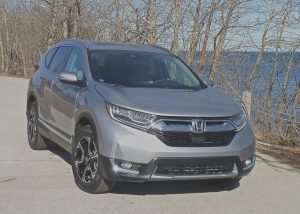
Nothing has changed more than the grille on each CR-V generation, and this time the stylists got it right.
Especially if you’ve stopped by the Great Lakes! Candy Shop in Knife River, and got overly friendly with some of those home-made caramel things. Let’s see you try to make it all the way home without sampling some of the goodies, after which you need some high-test washer fluid to clean the touch-screen.
As for the prices of the CR-V stable, each model offers all the features of the previous model, plus some added stuff. So the prices go up commensurately and each level seems to be a relative bargain. And while the basic LX is in the mid-$20,000 range, the completely loaded Touring model might reach the mid-$30,000 level. My favorite is the EX-L, because I like leather seats, and I’d pay extra for them, as well as the other features that model adds.
And so as not to embarrass anyone at Motor Trend, we’ll keep it a secret as we jump at that 1.5-liter turbo with its CVT, accepting power increases over the 2.4, as well as delivering fuel economy of over 30 mpg on the highway.
Jaguar adds ‘the Jaguar’ of SUVs
Filed under: Weekly test drives, Autos
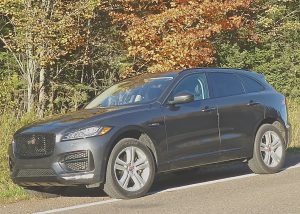
One of the most storied names in sports cars and sedans, Jaguar has jumped into the SUV segment with the F-Pace that gives up nothing in the classy luxury area.
Duluth, MN.
Jaguar. The very name connotes slinky handling and exotic and classy styling. The name does NOT conjure up the image of an off-road truck.
The word “Jaguar” and the term “SUV” do not, on the surface, seem compatible. But only if you have not seen the new Jaguar F-Pace. I got to spend a week test-driving the F-Pace in Northern Minnesota, along with a couple other Jaguar more traditional Jag staples — the XF coupe and the XE sedan
You may have heard that every auto company in the world either has made an SUV or is in the process of making one. This includes the usual suspects of manufacturers that are accustomed to making rugged vehicles. But it also includes some companies that challenge you to believe it now has a legitimate sports-utility vehicle.
The F-Pace is Jaguar’s first attempt at building a world-class SUV, and it is a keeper. It gets a 2.0 turbo-diesel or 3.0 supercharged V6, which can be selected as 380-horse missile. It is fast in a straight line, and it handles…well, like a Jaguar. There’s never been a Jag that didn’t handle well. This just happens to be an SUV.
At about $70,000, the Jaguar F-Pace has a clean and classy silhouette, unencumbered with too many grooves and swoosh styling touches. It won a recent winter-drive competition by Motor Trend, beating the AMG-trim Mercedes GLC and a Porsche Macan GTS in performance — and also, the magazine says, with the most comfortable seats.
Other F-Pace models range from $42,000 to $57,000 for base price, but if you want to hold the price down, stay away from the delectable option bin.
Jaguar is owned, these days, by Tata Motors of India, a big-time auto manufacturer in a country that is rushing to the top of auto-selling, as if pursuing China to become the largest. Within a year or two, those two will be among the top three car-selling nations on the planet.
Maybe we shouldn’t be that surprised; Tata also bought Jag’s British cousin, Land Rover, which makes some of the best-engineered off-road vehicles anywhere. The plan works well, with Range Rovers now boasting Jaguar power and Jaguar undoubtedly benefitting from Land Rover’s off-road expertise.
Duluth, Minnesota, is a city with 90,000 on the Western tip of Lake Superior. Built on the side of a cliff means it has fantastic vistas of every sunrise. Its size also means Duluth doesn’t have the full spectrum of auto dealerships, although the Twin Cities of Minneapolis and St. Paul are only 2 hours away. From my experiences there might be more car-fanciers per capita in Duluth than anywhere else I’ve been.
Every summer, some sort of vintage car show is held somewhere in the Duluth area virtually every weekend. The biggest is the annual Sidewalk Days downtown, when they close off Superior Street to traffic and have all the shops and restaurants take it over. For the first weekend, there is a huge hot rod and vintage car show, with at least a hundred beautifully restored cars lined up on both sides of the street for about six blocks.
As the area’s new car test-driver in residence, I knew I’d have a new car that week last summer, and I was able to park on the street, amid the show cars.
That week I had at my disposal a new Jaguar F-Type coupe. Now, as exotic cars go, we have Ferraris, Lamborghinis, Porsches, Aston Martins, Maseratis, a Lotus or two, and a Mercedes or four. But jolly old England, with its Jaguars, takes a back seat to nobody. To coin a phrase.
The latest edition of the F-Type is a dramatic example of how well a storied old company in Coventry, England, with the right infusion of financial backing, can create a spectacular array of progressive and contemporary exotic cars. Under the ownership of Tata Motors, Jaguar is at the top of its game.view
So there I was, with “my” Jag on Superior Street, right out front of a music and specialty shop where I could watch interested car folks meander by, stopping now and then to look at a 1957 Chevy, or some similar ancient car. But all of them, every single one, stopped in their tracks to gaze at the Jaguar F-Type.
That’s when I felt a little guilty. Those custom and restored cars consumed hundreds of hours and thousands of dollars, and many were prize-winners. But none of them could divert passers-by from stopping to appreciate the Jag.
You can buy the F-Type R-Sport with its optional 5.0-liter V8, supercharged up to 575 horsepower and 516 foot-pounds of torque for just under $130,000. You also can buy it for $62,000, which represents a tremendous bargain with its 3.0-liter supercharged V6 with 340 horsepower and 332 foot-pounds of torque, or tweaked from the factory to 380 horses and 389 foot-pound.
In any form you get fantastic performance, and either a 6-speed manual, or a 6-speed automatic that is operated by a neat little puck-shaped gadget that rises out of the console when you start the car. You also can get it in a convertible.
Stunning as the F-Type is, particularly from the rear corner, where the spectacular tapering roofline is more than just exotic, it is just the hot model of Jaguar’s livery.
Within a few weeks, I got the Jaguar XE sedan. The F-Type is drop-dead gorgeous. The XE sedan came in two forms, the XE 35t Prestige, with the same 340-horse 3.0 supercharged V6, at $46,595, or the XE 20d, with a 2.0-liter turbocharged diesel engine, with 180 horsepower and 318 foot-pounds of torque and all-wheel drive.
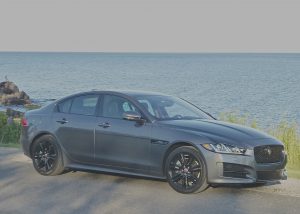
The XE sedan came with a powerful, smooth and economical 2.0-liter turbo-diesel and all-wheel drive.
Yes, an AWD turbo-diesel sedan, with Jaguar flair, at just under $50,000. Diesels have been getting a bad rap lately, but they still perform with great power and can roll up impressive fuel economy figures.
By interesting coincidence, after thoroughly enjoying the drives in all these Jaguars, the timing continued to be fortunate. Another vintage, classic and hot rod car show was being conducted a few weeks after Sidewalk Days, out in West Duluth. By chance, that was when I had the XE 20d. I decided to be more subtle, and I parked at the far end of the gathered shopping-center parkers.
As my wife, Joan, and I were about to leave, we walked up to the car from behind, and a couple of arriving car fanatics stopped. “Wow,” one of them said, reading the small plaque on the car, “an all-wheel-drive Jag sedan?”
Yeah, I told him, and the amazing thing is it’s a 2.0-liter turbo-diesel. “You’re kidding!” he said. “A diesel?”
Maybe I should try to get another test in the full rotation of Jaguars this summer, so I could try my luck with the F-Pace one more time. Jaguar keeps building better and more useful vehicles every year, but with all the eager car-nuts in the North Shore region of Minnesota, I’m sure Jaguar will run out of models before Duluth runs out of car shows.


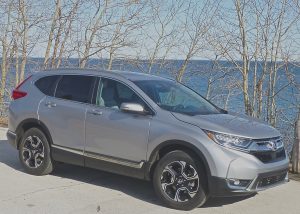

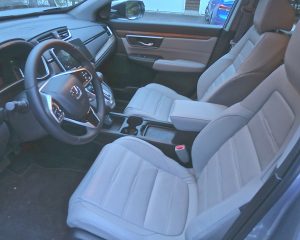

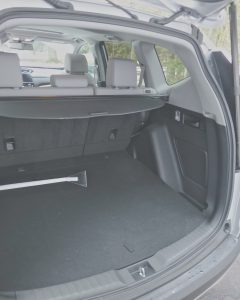
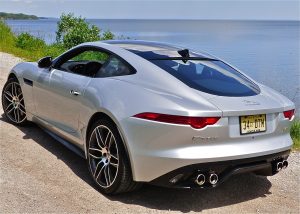
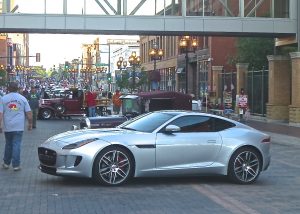

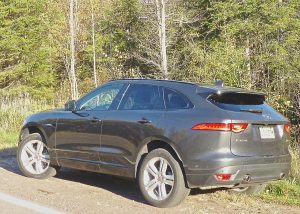
 John Gilbert is a lifetime Minnesotan and career journalist, specializing in cars and sports during and since spending 30 years at the Minneapolis Tribune, now the Star Tribune. More recently, he has continued translating the high-tech world of autos and sharing his passionate insights as a freelance writer/photographer/broadcaster. A member of the prestigious North American Car and Truck of the Year jury since 1993. John can be heard Monday-Friday from 9-11am on 610 KDAL(www.kdal610.com) on the "John Gilbert Show," and writes a column in the Duluth Reader.
John Gilbert is a lifetime Minnesotan and career journalist, specializing in cars and sports during and since spending 30 years at the Minneapolis Tribune, now the Star Tribune. More recently, he has continued translating the high-tech world of autos and sharing his passionate insights as a freelance writer/photographer/broadcaster. A member of the prestigious North American Car and Truck of the Year jury since 1993. John can be heard Monday-Friday from 9-11am on 610 KDAL(www.kdal610.com) on the "John Gilbert Show," and writes a column in the Duluth Reader.